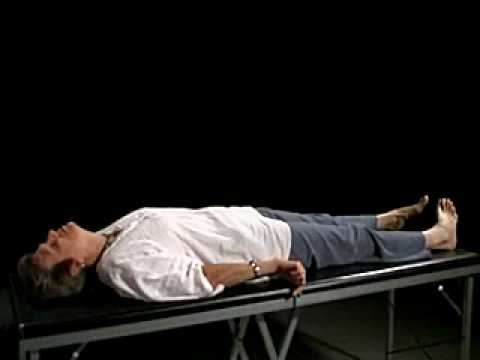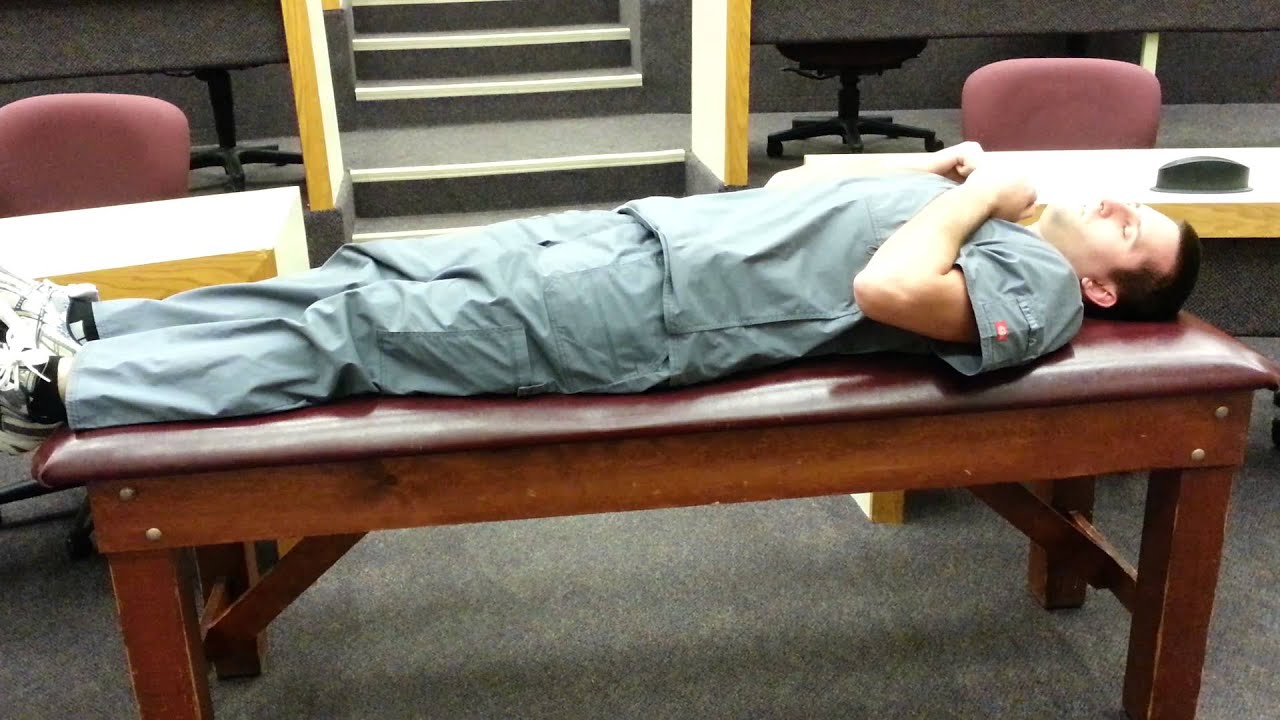Decerebrate and decortication positions are two spontaneous and abnormal positions of the human body that allow the doctor to make the diagnosis of a deep alteration of the nervous or motor system.Although both positions are similar -decerebration and decortication- They have different characteristics and indicate different alterations. Next, we will explain each of them individually.
Decerebration position

According to the signs of the body we can determine the location of the lesion.
Decerebration is an injury that occurs below the level of the red nucleus. This nucleus is a structure located in the rostral part, that is, in the upper mesencephalon area, and is linked to motor coordination.
As a result of this condition, the patient keeps his arms and legs extended when he lies down. Likewise, the toes are pointing down and the head and neck are arched back. To all this, muscles tense and remain rigid. Therefore, when a person takes this position when he lies down, we can deduce that he has a serious injury in the brain.
Causes
The most frequent cause of the decerebrate posture is, as we have mentioned, an important central injury. When the cases are more severe, the patient may suffer opisthotonos, which are severe muscle spasms of the neck and back. This position can occur on one side of the body, on both or only affect the arms. In addition, it is feasible that decerebrate and decortication positions occur at the same time. For example, a patient can have decortication posture on one side of the body and decerebrate posture on the other.
Beyond the lesion in the red nucleus, other causes that trigger this position are:
- Intracranial hemorrhage.
- Cerebral stroke.
- Encephalopathy: Brain problem due to drugs, intoxication or infection.
- Cranial trauma.
- Brain tumor.
Diagnosis and treatment
The patient will receive emergency treatment, which includes the placement of a breathing tube and respiratory support. In addition, you may be admitted and moved to the intensive care unit. Once your state stabilizes, you will be given a more detailed physical examination, which will include a careful evaluation of the brain and the nervous system. Some of these tests can be:
- Blood and urine tests, in order to detect drugs or toxic substances and measure the blood components.
- Cerebral angiography: It is a study of the blood vessels of the brain.
- Magnetic resonance or computed tomography of the head.
- EEG: Examination of brain waves.
- Lumbar puncture to examine the cerebrospinal fluid.
Decortication position
 The decortication is linked to damage to the spinal cord.
The decortication is linked to damage to the spinal cord.As we already know, decerebrate and decortication positions have many characteristics in common. Like the decerebration, the decortication posture it is a specific position of the body of a patient lying on his back.
This position, unlike the previously explained one, suggests a severe neurological injury with damage of the cortico-spinal cord, that communicates the brain with the spinal cord. Although it is a serious injury, it is generally not as serious as the decerebrate posture. It is a position in which the patient is with arms flexed, fists closed and legs straight. The arms are bent towards the body and the wrists and fingers are bent, supported on the chest.
As we have said, it is a brain injury not as serious as that of decerebration, but still the person should receive immediate medical attention. In addition, it should be considered that this position can move towards a decerebrate posture.
Causes
There are several reasons that can lead to a posture of decortication. Among them, we find:
- Cerebral haemorrhage.
- Brain tumor.
- Cranial trauma.
- Stroke.
- Worsening of brain function that occurs as a result of liver damage, infections in the brain or others.
Diagnosis and treatment
Diagnosis and treatment of decerebrate and decortication postures are very similar. When a person presents an abnormal posture of any kind, usually occurs with a decrease in alertness. Thus, Any patient with this condition should be examined as soon as possible by a medical professional. Also, it will be imperative that you receive treatment as soon as possible at the hospital.
Types of stiffness
In the case of finding a strong stiffness in the patient, the highest degree of affectation is seen.
The patient will adopt the stiffness posture ofCortication. This is characterized by hyperextension of the lower limbs with bending of the upper ones. It is indicative of diacephalic involvement.
As for the posture of rigidity of Brainlessness the level of affects the semi-brain. The extender response of the upper limbs with flexion of the lower limbs is associated with bulge dysfunctions and diffuse muscle sagging with little or no response to stimuli.